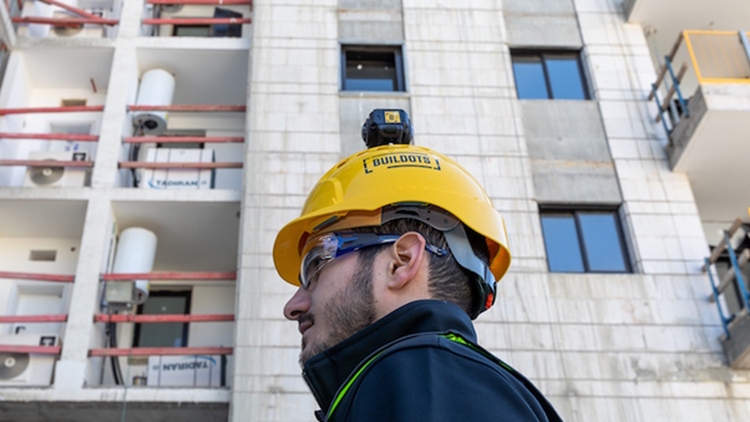
Wates’s residential arm has adopted AI-led site progress monitoring technology from Buildots on the Orbit’s Park East residential project in Erith, south-east London.
Buildots’ AI algorithms automatically validate images captured by hardhat-mounted 360° cameras, detecting gaps between the original design, scheduling, and the construction site’s reality, according to BIM+. The platform acts as a virtual control room for project managers, allowing them to make decisions that can speed up construction and reduce costs.
The Park East development is part of Orbit’s project to transform 1970s high-rise tower blocks, which previously suffered from low demand and poor local reputation, into a modern, thriving community.
The data gathered by Buildots’ technology ensures essential working documentation, such as the fit-out matrix and key date schedules, can be trusted by all onsite personnel. The platform also helps the commercial team with handling applications of payment without having to visit the site.
Glen Roberts, operations director at Wates Residential, said: “The Wates Group prides itself for being on top of new technologies and innovation, and working with Buildots is very much in that spirit.
“Buildots provides an incredibly honest and detailed picture of a work site, so the work that needs to get done, gets done. And it does this behind the scenes, without my needing to walk the site with schedules or spreadsheets. I look forward to working together as this worthwhile project progresses over the coming months.”
Roy Danon, Buildots CEO and co-founder, said: “Managing tens of thousands of details can be a complex task in projects like Park East and our platform ensures any issues are dealt with in a timely and cost-effective manner. Buildots provides visual documentation of site activities, fault identification, monitoring of schedules, and even advance notice of expected delays to ensure the highest levels of productivity and efficiency are always maintained.”
Comments
Comments are closed.










THE company I worked for tried this in a joint project with BRE in the late 1960’S on a large London site, It was also hoped that you could arrive at reasonably accurate valuations from the building profiles.
However the computing facilities available then meant you spent longer developing the programmes which made it non cost effective. And to be honest not very accurate.
However we tried!